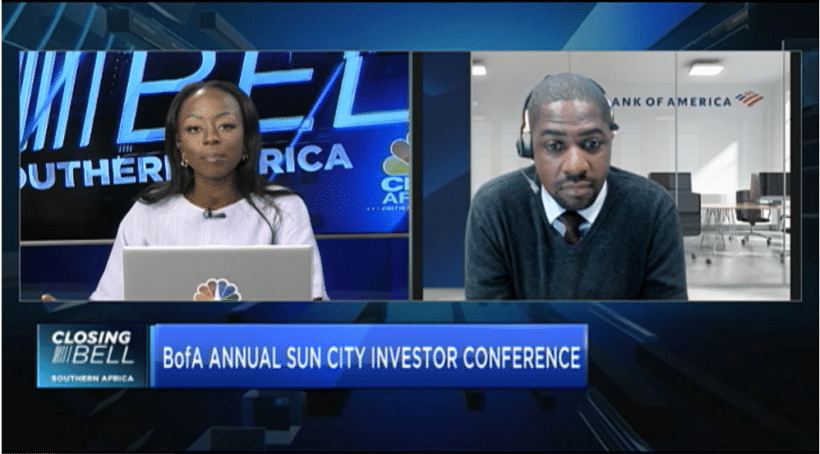
Bank of America says South Africa’s rand is likely to strengthen against the dollar this year as the United States’ Federal Reserve and other global central bank begin cutting interest rates. “You are getting to a time where central banks seem to have won the war on inflation and stopped hiking cycles and looking for a pivot towards cutting,”BofA Sub-Saharan economist Tatonga Rusike told CNBC Africa. “So a cutting cycle, particularly for the Fed, is positive for South Africa and particularly for the rand. So that could help the rand to strengthen and also attract non-residents coming into the local currency markets as well, both in bonds and stocks.”
The Federal Reserve is scheduled to announce its latest monetary policy stance later this evening with most economists expecting no change with the emphasis still on no hurry to cut rates. However some suggest it may update its economic projections as well as its unofficial forecast for the direction of interest rates over the next several years. South Africa’s currency is down more than 28 percent against the dollar in the past three years amid investor concern about lower growth and perceived closer ties with Russia and China. Foreign investors have dumped more than 100 billion of South African bonds and stocks in the past year, leaving the currency trading around R19 per dollar.
That has cut South Africa’s weighting in the MSCI world index to around 3 percent, Rusike said. Africa’s biggest economy narrowly avoided a recession last year, with fourth quarter growth at 0.1 percent, taking the year’s expansion to 0.6 percent. The government is forecasting growth at 1.1 percent this year as it deals with a power shortage and a logistics crisis.
Rusike said the attention being paid to fixing the nation’s rail network by allowing private sector use of the railway network by third parties will help export growth. “I think in the short term you are still dealing with the issues around tariffs to use that rail network. But we got to a place where private sector can now be involved in trying to unlock the rigidities that we see in the public sector, particularly with Transnet,” he said. “So I think we are seeing things improving in a positive way, but these things take time and probably a couple of years to try and solve them. But the direction and the signaling is probably in the right direction.”